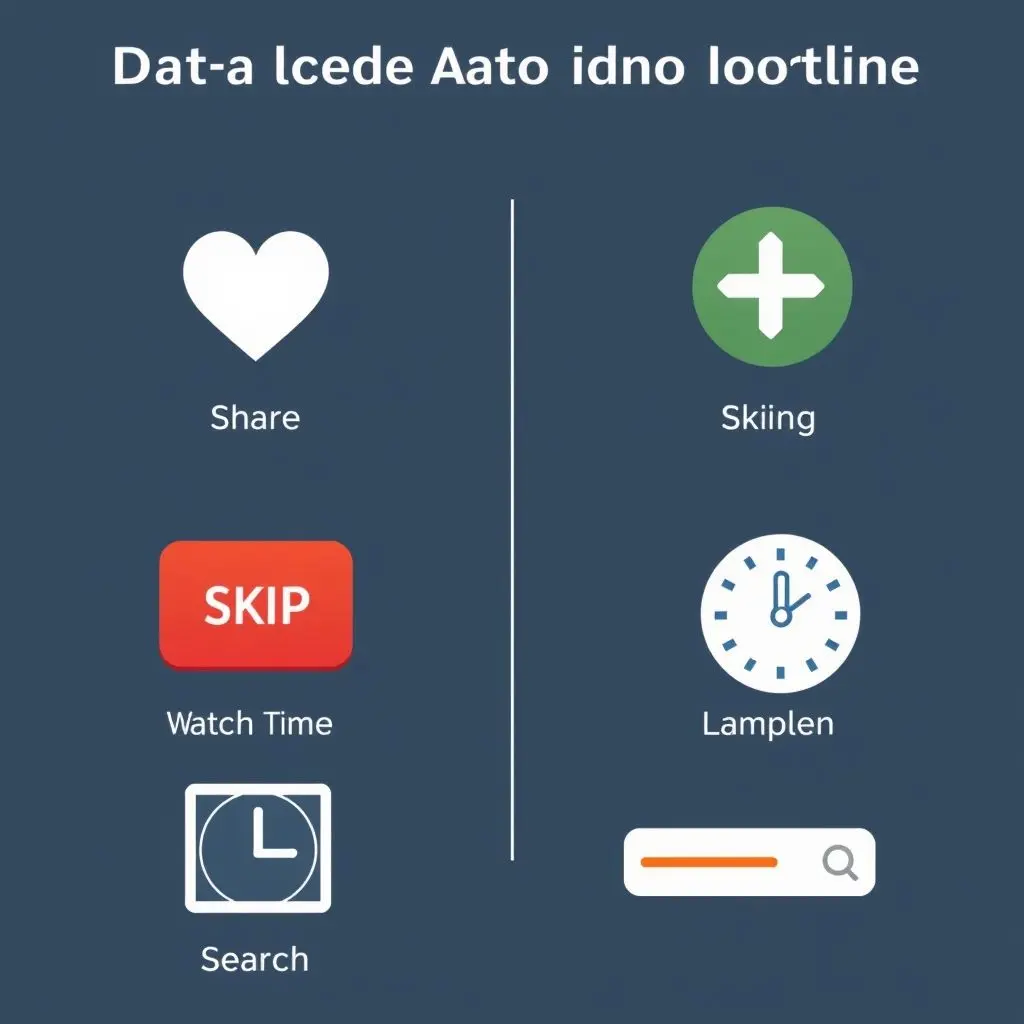Have you ever scrolled through your favorite app – be it a social feed, a video platform, or a shopping site – and wondered, “How did it know I wanted to see *that*?” It feels almost magical sometimes, doesn’t it? Like the digital ether is reading your mind, serving up exactly what holds your attention.
Well, that magical feeling is powered by something commonly referred to as “The Algorithm.” But what exactly *is* this abstract entity that seems to dictate so much of our online experience? Let’s pull back the curtain a bit.
Table of Contents
Imagining the Digital Sorter
Think of the digital world not as a vast, unorganized ocean of content, but as a colossal, ever-shifting warehouse. Every video, every post, every article ever uploaded is a package arriving at this warehouse.
Now, imagine a hyper-intelligent, lightning-fast sorting machine at the heart of this warehouse. This isn’t a single robot, mind you, but a complex system – or more accurately, *systems*, as different platforms use different versions and combinations – designed to process every incoming package and, more importantly, figure out which packages are most relevant to *you*, right *now*.
This sorting machine doesn’t just look at the label on the package (like keywords or tags). It’s constantly learning. It watches which packages you pick up, how long you look at them, which ones you share with others, and even which ones you immediately toss aside. It takes all this information – millions, billions of data points – and uses it to predict which new packages you’re most likely to be interested in next.

More Than Just a Black Box
While the exact inner workings of specific platform algorithms are closely guarded secrets, the fundamental principles are based on complex mathematical models and machine learning. They aren’t sentient beings; they are sophisticated recommendation engines built to optimize for certain goals – often, keeping you engaged on the platform.
Here’s a simplified look at the components these systems often consider:
1. Your Interactions
- What you engage with: Videos you watch fully, posts you like, comments you leave, things you share.
- What you *don’t* engage with: Videos you skip quickly, posts you scroll past. This negative feedback is just as valuable for refinement.
- Your search history: What topics you actively look for.
2. Information About the Content
- Metadata: Keywords, hashtags, descriptions, title.
- Performance: How popular is the content overall? How are *other* people interacting with it?
- Freshness: Newer content might be prioritized, especially for breaking news or trending topics.
3. Your Context
- Your device and location: Can influence local recommendations or format preferences.
- Time of day: Different content might be preferred at different times.
- Your connections: What are your friends or people you follow engaging with?

All these factors are weighted and combined in incredibly complex ways to rank potential content and present you with a personalized feed. It’s less like a mind-reader and more like a
Seeing the Algorithm in Action
Ever wondered if your engagement truly makes a difference? Platforms explicitly use your feedback to train and refine these sorting systems. Liking, sharing, commenting, and even subscribing signals to the algorithm that you found value in a piece of content, helping it learn your preferences better for future sorting.
Speaking of algorithms trying to find you, did this very video successfully navigate the algorithmic maze to appear on your feed? Take a moment to visualize the journey it might have taken!
If it did, perhaps give the system some positive feedback! Hitting that like button or subscribing isn’t just supporting the creator; it’s also sending valuable signals to the algorithm, telling it, “Yes, send more like this!”

Beyond Just Recommendations
While we often talk about algorithms in the context of social media feeds, these complex sorting and prediction systems are everywhere online. They power search engine results, personalize online advertising, detect fraudulent activity, recommend products on e-commerce sites, and even help streaming services suggest your next binge-watch.
Each algorithm is designed with a specific goal – whether it’s showing you the most relevant search result, the ad you’re most likely to click, or the video most likely to keep you watching.
Frequently Asked Questions About “The Algorithm”
Q: Is “The Algorithm” a single entity that controls everything online?
A: No. “The Algorithm” is a conceptual term. In reality, it refers to numerous complex, platform-specific algorithms and machine learning models working simultaneously. Google has search algorithms, YouTube has recommendation algorithms, Instagram has feed algorithms, and so on. They are developed independently and tailored to each platform’s goals.
Q: Can I “trick” the algorithm to see only what I want?
A: While you can heavily influence your feed by consciously and consistently engaging with specific types of content (liking, watching, commenting, searching), you can’t truly “trick” it. The systems are designed to adapt. Over time, your genuine interactions are the most powerful signals you can send.
Q: Why does my feed sometimes show me things I don’t like?
A: Algorithms are constantly experimenting and learning. Sometimes they get it wrong. They also need to balance personalization with showing you a variety of content, including popular or trending items you might not have specifically signaled interest in yet. External factors, or simply a misinterpretation of your signals, can lead to irrelevant content appearing.
Q: Are algorithms responsible for filter bubbles or echo chambers?
A: Recommendation algorithms that heavily prioritize content similar to what you already engage with *can* contribute to filter bubbles, where you are primarily exposed to viewpoints or information that aligns with your existing beliefs or interests. This is a known concern, and some platforms are exploring ways to introduce more variety.

Navigating the Algorithmic Age
Understanding that “The Algorithm” is essentially a sophisticated sorting system, driven by data and designed to predict your interests, empowers you as a user. Your interactions aren’t just passive consumption; they are active signals that shape the digital world presented to you.
By being mindful of how you interact with content, you can actively participate in training these recommendation systems, helping them become better at sorting the vast digital landscape to find the pieces that genuinely resonate with *you*. It’s a continuous dance between you and the digital sorter, shaping your unique online experience.





